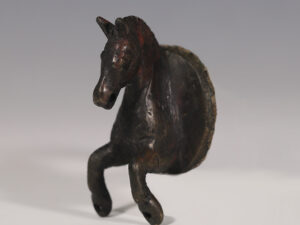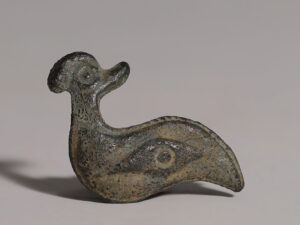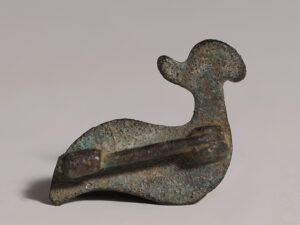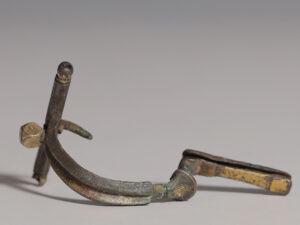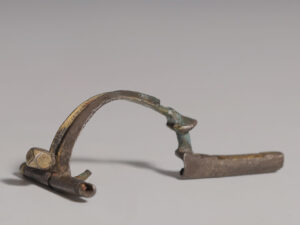The ancient Roman tintinnabulum was an ornament or charm, used in a similar fashion to a wind chime. Created as an amulet with apotropaic functions, they were hung within the entranceways of shops and houses, as well as thresholds to rooms, with the purpose of warding off bad spirits, and bestowing the owner with success and good fortune. Made to ring or chime in the wind, their sound was believed to provide protection against evil spirits. Roughly translated as ‘little bell’, tintinnabulum were often adorned with bells and phallic imagery, intended to provide even greater good luck.
Ancient Roman Bronze Tintinnabulum
$203.65
A fine ancient Roman bronze tintinnabulum or wind chime. The piece features three chimes in the shape of a zoomorphic head and neck. These stylistic chimes are attached with a suspension loop to a central triangular suspension piece. The central piece takes the form of a hollow cone with triangular cut-outs, and tapers to a ribbed bar, before terminating in a triangularly perforated finial. This would have allowed the piece to be hung in an entranceway.
Out of stock
Additional information
| Weight | 23.2 g |
|---|---|
| Dimensions | 2.8 × 6.8 cm |
| Culture | Ancient Roman |
| Metal | Bronze |
| Region | Southern Europe |






